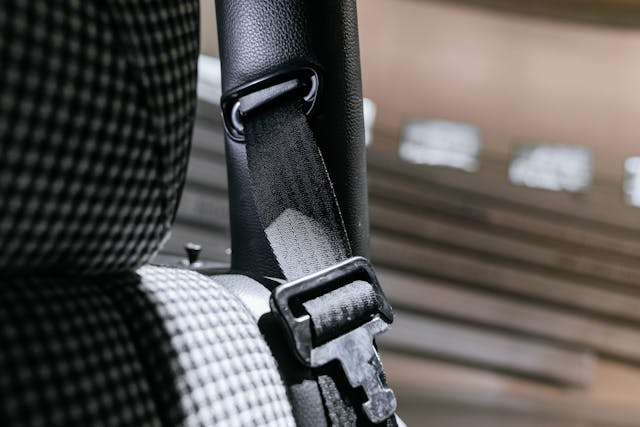Our Two Cents: What was the most important automotive invention?
Time always marches forward, sometimes upward when it comes to technology. In the world of the automobile, that march of progress has been a good thing. Cars get better and better over time, but a singular innovation usually sparks the change that sends the trajectory climbing even higher. I asked my cohorts at Hagerty Media for the automotive invention they think has made the biggest difference. I even started off with some low hanging fruit to get their wheels turning:
- Tubeless tire
- Oil Filter
- Cup Holder
- Cigarette lighter
So let’s see what the gang came up with for this installment of Our Two Cents. I expect you’ll be surprised by a few of them.
The hand crank delete?

“Charles Kettering’s self-starter for the 1912 Cadillac.” –Joe DeMatio
“Another step forward that borders on being as important as Joe’s with the electric starter would be synchronized gears. Don’t get me wrong, one of the best feelings in the world is double clutching an unsynchronized box and getting the shift perfect, but the convenience of not having to double clutch cannot be understated.” –Greg Ingold
Three-point safety belts

“I am gonna go with Volvo’s three-point seatbelt, created by engineer Nils Bohlin.” –Eric Weiner
“Airbags owe their implementation to a whole lot of inventors. Cars would be a lot less safe without them.” –Brandan Gillogly
You can’t pick just one!

“I have a few that stick out in my mind: implementing the assembly line for automobiles, electronic fuel injection, the catalytic converter, and definitely radial tires.” –Larry Webster
“Safety glass and disc brakes.”–Todd Kraemer
Standardized Controls

“I’m going to go with the traditional control layout. Accelerator on the floor to the right, brake pedal on the center and clutch on the left. Drive something like a Model T where it is a combination of hand and foot controls and you’ll quickly appreciate the standardization.” –Greg Ingold
“To Greg’s point, even the steering wheel.” –Todd Kraemer
Not standardized controls?

“Haptic volume and HVAC sliders, for the purpose of reminding everyone that physical controls are and always will be superior.” –Eddy Eckart
“And to combine Eddy and Todd’s comments above, let’s mention Tesla’s yoke steering wheel.” –Sajeev Mehta
The love of the rings?

“The piston ring. The ability to seal a cylinder and moving piston, especially in a way that has any longevity in the environment created by combustion, is amazing and the reliability and longevity of the piston ring is likely what has allowed the automobile to progress from a novelty to near necessity. Imagine if engines required re-ringing after just 20k miles: Would we use cars and trucks the way we do today? It’s one of the hardest working parts of an engine and rarely is ever thought of until failure.” –Kyle Smith
“I’m kinda glad for the failures present in piston ring design, otherwise I wouldn’t have a silly name for my advice column.” –Sajeev “Piston Slap” Mehta
Overhead valve engines?

“Pushrods. Heck yeah!” –Cameron Neveu
Integrated circuitry

“While I admit that electronics are reaching too far in some instances, our motoring lives have improved significantly once the integrated circuit made its way into the automobile. There’s solid state ignition, improved radio performance, anti-lock brakes, the gauge cluster on the Series I Aston Martin Lagonda … the list goes on and on.” –Sajeev Mehta
Smartphone integration

“Apple CarPlay, and I am approximately 64% serious about that.” –Grace Houghton
“General Motors would like a word about that, Grace.” –Nathan Petroelje
One for Minivan
“Automatic sliding doors on minivans.” –Ben Woodworth
***
Check out the Hagerty Media homepage so you don’t miss a single story, or better yet, bookmark it. To get our best stories delivered right to your inbox, subscribe to our newsletters.



Nils Bohlin designed the first commercially available three-point safety belt, but the concept was actually invented by two Swedish engineers, Bengt Odelgard and Per-Olof Weman. They worked for a Swedish power company and were concerned for the safety of drivers in their company. They installed three-point belts in company vehicles and contacted Volvo with the idea of putting this type of belts in Volvo’s cars. Bohlin was the Volvo engineer who was in charge of the project and Volvo got the patent for it.
I can’t believe no one mentioned the overdrive transmission. You get way better mpg and the engines last way longer from lower ram. Remember when you had to have your engine rebuilt at 100,000 miles
That’s supposed a say rpm not ram. Stupid spell check
For safety, padded dashboards and non pointy knobs and switches.
For reliability, computerized fuel injection.
For comfort, air conditioning.
Not the greatest invention but the hot air tube off engine manifold helping with faster cold starts.
The guy who invented that, was the father of a friend mine and he also invented the safety wire plyers.
I meant faster warm ups.
New spark plugs. The only bad thing about them is they can be installed so long they can be a challenge to remove.
Is this kind like, reflectively, on which was the best girl friend? Seriously, the march of progress in automotive technology is Astounding! We are all beneficiaries. As for the best/ top ten, etc – that’s bar room discussion.